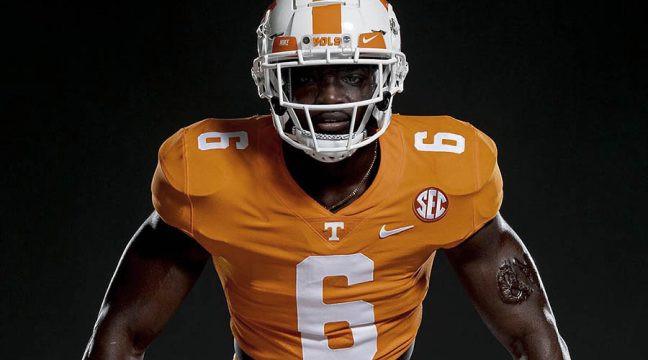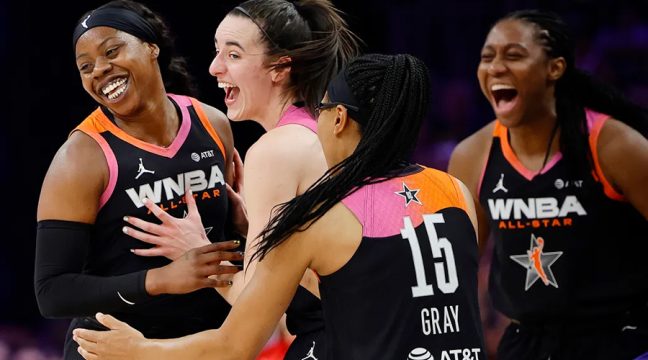As e-commerce margins plunge, some savvy independent retailers are shifting their online strategies toward supporting their brick-and-mortar stores.
By Charlie Lunan
Independent outdoor specialty retailers who led the charge into cyberspace two decades ago are now leading a retreat.
Faced with rapid deterioration in online margins, independent specialty retailers are shifting resources back toward supporting their brick-and-mortar stores where they can build lasting customer relationships more conducive to a full-price business model.
Consider Rock/Creek, the Chattanooga, TN, retailer among the first independent outdoor specialty retailers to sell online in the late ‘90s. Two years ago, the retailer stopped selling on Amazon after determining its store there was not making enough profit. Since then, margins at its remaining online channels have also deteriorated, according to Co-owner Dawson Wheeler.
“In the last 36 months and particularly the last 18 months, we’ve seen a promotional cadence from some manufacturers and vendors online that has gone past encroaching on our business to really taking our business away,” Wheeler told SGB. “To compete at that promotional level is not possible for Rock/Creek and, honestly, I don’t think it’s possible for anyone. In any case, we don’t want to be in the transactional business. We want to be in the building customer relationship business and have a full-service, omni-channel model.”
In early December, Dawson expected online sales to account for about 20 percent of Rock/Creek’s 2015 sales, down from about 45 percent two years ago. The company slashed its online marketing budget by about 75 percent last year. It invested some of those savings optimizing its online store for smartphones, which now drives about 40 percent of traffic on its shopping search engine. Going forward it will shift online marketing dollars from paid search to RootsRated, a hyper-local content marketing platform co-founded by Rock/Creek’s long-time marketing director and e-commerce guru.
“In the last 36 months…we’ve seen a promotional cadence from some manufacturers and vendors online that has gone past encroaching on our business to really taking our business away.” – Dawson Wheeler, Co-owner, Rock/Creek, Chattanooga, TN

Dawson Wheeler, Co-owner, Rock/Creek, Chattanooga, TN
“We will continue to spend money to drive traffic to the web, but the majority of the focus will be on supporting markets within 100 to 200 miles of our stores,” said Dawson. ”From a storefront point of view, we will manage RockCreek.com like any other storefront, which is to say it has to pay for itself and be sustainable.” Rock/Creek plans to open an 8,000-square-foot store in Nashville next year that will mark its seventh brick-and-mortar location and its first store outside the Chattanooga market. It opened is sixth store last summer in Cleveland, TN, 34 miles northeast of Chattanooga.

David Polivy, Tahoe Mountain Sports, Truckee, CA
At Tahoe Mountain Sports in Truckee, CA, David Polivy has seen much the same. As of the first week of December, fourth quarter sales at the retailer’s Amazon store were off approximately 70 percent. Polivy attributed the sharp decline to growing competition from retailers and manufacturers using Fulfillment-by-Amazon, or FBA, which essentially enables online merchants to outsource warehousing, customer service and fulfillment to Amazon. Polivy says outdoor brands, including some technical backcountry skiing brands, have become more accepting of stand-alone FBA-retailers in the last 18 months.
Data from ChannelAdvisor, which helps nearly 3,000 retailers, brands and other merchants manage merchandise sales across hundreds of online channels, show adoption of FBA accelerating. The company reports that FBA’s share of all Amazon sales managed on its platform grew between 17.5 and nearly 40 percent a month during the first 10 months of 2015. While figures were not available for November in time for this article, FBA’s share surged to a record 53.4 percent in November 2014.
“It has gotten out of control and there is going to have to be an awakening in the industry,” said Polivy, who has stopped ordering dozens of SKUs he sees on constant sale online.
Holiday sales at the company’s brick-and-mortar store, meanwhile, were running at twice 2014 levels as of early December thanks to early snow and easy comps left by last year’s drought.
“This is obviously the silver lining and what is helping balance everything out,” Polivy said of his business, which sold exclusively online for three years before opening its physical location in 2007. “Early snow and cold weather have really helped as people haven’t spent on winter goods in a few years now, so as long as the weather pattern holds, we are feeling optimistic.”
Black Friday Turns Gray
The need to re-examine strategy seems urgent in the wake of the shift in shopping patterns witnessed over the holidays. Consumer surveys and in-store counting devices indicate sales at U.S. malls declined about 10 percent on Thanksgiving Day and Black Friday, while e-commerce sales growth over the five-day holiday period ending Cyber Monday accelerated from the high-single digits of recent years to the high teens, according to estimates.
The drop in traffic and rising apparel inventories prompted Wall Street analysts to downgrade several stocks and appeared to set the stage for sluggish sales and deep discounts in the final weeks of the year.
The disparity in growth also poses a dilemma for brand managers, who overwhelmingly want independent outdoor specialty retailers to thrive, but who also have been ratcheting up direct sales in recent years. It’s now common for outdoor brands to enter the U.S. market by selling direct to consumers. Fjällräven, a Swedish brand that only established its U.S. subsidiary in 2012, announced plans to open seven new stores in the United States and Canada in the fourth quarter, which would take its store count in the region to 16. Stio, Founded by Cloudveil Co-founder Steve Sullivan, sells exclusively through its own stores. Prana opened its seventh U.S. retail location in Manhattan Beach, CA, last fall.

Steve Sullivan, Co-Founder, Cloudveil
“Vendors have enough margin to out-compete any retailer with higher bids on google, they already own the SEO results, and they’re becoming more aggressive in their promotional tactics,” noted one retailer, who requested anonymity. “One by one we’ve seen retailers just bow out and stop competing.”
Point-of-sale data from SSI Data*, which tracks sales across nine channels of distribution, indicate independent outdoor specialty retailers’ share of outdoor product sales has declined from approximately 10 percent to less than 8 percent since 2012. That decline was more than 2.5 times bigger than the decline seen at department stores. The biggest gainers during that period were national online retailers, followed by mid-tier retailers and full-line sporting goods stores. Manufacturers’ direct sales are not included in the figures.
An Opening For European Brands
In this environment, independent retailers are much more likely to replace a marginal brand that sells direct with a new brand that does not.
At the Grassroots Outdoor Alliance Summit in October one of the most talked about footwear brands was Salewa, an Italian brand that opened an office in Boulder, CO, in 2007 after decades neglecting the U.S. market. The brand now sells to about 40 members of the Grassroots Outdoor Alliance, which provides buying, networking and other services to a select group of independent outdoor specialty dealers.
Kurt Smith, who represents the brand in the Great Lakes and Southeast regions, attributes the growth to design elements such as climbing shoe lacing systems and the brand’s “blister-free guarantee.” Salewa gained dealers in 2013, when it announced it had secured exclusive rights to debut Gore-Tex Surround Technology in its spring 2014 line. When asked why they like the brand, however, merchants are quick to praise Salewa for not selling direct to consumers.

Photo courtesy Aku
“For an ‘upstart’ brand like Aku, we can adjust wholesale/retail positions, dealer margins by model, and booking incentives due to the 20-percent-plus swing in currency.” – Sam McCoubrey, Aku North America GM
Thanks to the strong dollar, independents retailers have more options to choose from, including European made leather boot products that were out of reach a year ago. The Italian made boot brand Aku, for instance, cut prices and added incentives on its 2015 lines in a bid to win over U.S. dealers, according to Sam McCoubrey, general manager of Aku North America.
This spring, Aku dealers will begin selling a European made, full-grain leather hiker with Vibram outsole for $190 retail at 50 percent margin before pre-season discounts and other dealer incentives.
“For an ‘upstart’ brand like Aku, we can adjust wholesale/retail positions, dealer margins by model, and booking incentives due to the 20-percent-plus swing in currency,” said McCoubrey. “Everyone benefits and the local specialty stores not only have better margins at compelling price-points – they also differentiate themselves by brand against the chains they compete within their trading area.”
Many buyers will get a first look at the next crop of up-and-coming brands at the New Exhibitor Pavilion at Outdoor Retailer Winter Market in January. Emerald Expositions, the City of Salt Lake and the State of Utah have spent millions of dollars in recent years to erect three air-conditioned tents next door to the Salt Palace to house about 200 exhibitors they can’t accommodate in the main hall. Though retail buyers said discovering new brands is the main reason they attend the show, many never make it across the street to the tents.
At Rock/Creek, Wheeler is hopeful outdoor brands that have adopted a more promotional online model will see the error of their ways and move back toward a full price model but he’s not willing to bet his business on it.
“There are full price direct-to-consumer vendors out there like The North Face, Patagonia and Marmot,” said Dawson. “That’s not going to go away. What I’m talking about are vendors that have developed a promotional model. We think those vendors are going to look up in two years and begin questioning that model because the people winning the game are Amazon, Google and the contractors the vendors are hiring to run their platforms. Their acquisition costs are huge and their conversion rates are way under one percent and they are undermining their full-price dealers.”
* SSI Data, powered by SportsOneSource, provides weekly point-of-sale (POS) data and analysis to retailers and manufacturers in the active lifestyle market. To schedule a personal demo or learn more call 303.997.7302 or Solutions@SportsOneSource.com.
Photo (Top) courtesy Trailblazer










